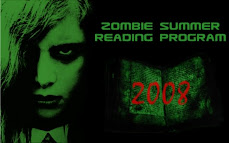 The Baby Thief: The Untold Story of Georgia Tann, the Baby Seller Who Corrupted Adoption by Barbara Bisantz Raymond
The Baby Thief: The Untold Story of Georgia Tann, the Baby Seller Who Corrupted Adoption by Barbara Bisantz RaymondA friend of mine once had Victorian-style business cards made up that read, "Joe Leo, Purveyor in Fine Human Infants." Hilarious, right? I always thought so, until I learned about Georgia Tann, a woman who kidnapped and sold children out of her Memphis orphanages from the 1920s until her death in 1950.
At the turn of the century, adoption wasn't terribly popular, as orphans and illegitimate children were considered to be innately inferior. Children most likely to be adopted on the Orphan Trains that took loads of children west were older boys who looked like they could do heavy labor.
Georgia Tann helped make adoption appealing to American families, even if they only happened to be wealthy or middle class white ones. Children were adopted to be children, not unpaid labor, which seems to have been her only positive contribution to the institution.
Tann brokered over 5000 adoptions during her tenure in Memphis, and raked in over $1 million doing it under the legitimate front of the Tennessee Children's Home Society. Her clients included state and local officials, judges, and Hollywood stars, including Dick Powell and June Allyson and Joan Crawford. Undoubtedly, she liked associating with these types, but even more, she enjoyed the leverage this gave her over them. These placements allowed her to run her dirty business without oversight or censure, and also allowed her to have laws changed when they hampered her methods. Having the notorious Boss Crump in her corner didn't hurt either.
Tann believed that adoption was good for orphans. She also believed it was good for children born out of wedlock. And she also believed it was good for children whose parents happened to be poor. She tricked unmarried women in labor into signing "routine forms," which severed their custodial rights, or bribed nurses to tell mothers that their babies had been stillborn. She hired spotters to find poor families, snatched the youngest and prettiest children from their homes, and enlisted one of her pocket judges to sign away the parents' rights, citing "poor living conditions" (apparently, the living conditions were not so poor that ALL the children had to be taken away).
And the suffering didn't end there. Conditions in Tann's homes were abysmal. Children were beaten, starved, dehydrated, and sexually abused by Tann and her staff. She made no effort to place children with loving families -- wealth was enough. As a result, many children were mistreated and abused by their adoptive parents, and some were "exchanged," if they weren't working out.
Also horrifying were the ads Tann ran in the local newspaper, featuring exploitative photographs of children up for adoption: "A solemn little trick with big, brown eyes, Madge is... five years old and 'awful lonesome,'" one ad reads.
To hide her crimes, Tann changed the birth certificates of the children she sold, and had the originals sealed. This policy seeped into legitimate organizations, and to this day, adoptees in many states are forbidden access to their birth records -- it's the law.
In the book, Raymond interviews men and women who were sold by Tann, and recounts their stories of being kidnapped from their parents, tortured in her facilities, and herded off to new families. She also interviews Memphis citizens, many in their 80s and 90s, who knew what Tann was up to, but were powerless to stop her and the Crump machine.
At first, the structure of the book is frustrating. Raymond jumps around in her narrative, and just when it seems she's about to sink her teeth into her subject, she turns her attentions somewhere less painful. It's almost as if Raymond can't face the monstrosity of Georgia Tann all at once, but has to confront her in bits before she can tackle the whole package.
However, by the end of the book, Raymond finds her courage and exposes Tann's crimes. It's a heartbreaking story, and almost unbelievable that one woman could destroy so many lives. That it happened here, and that it happened so recently, that the crimes were so blatant and heinous, and that no one stopped it. Then again, that's U.S. history, more or less.
If you liked...: (although "liked" isn't quite the right word for it) The Girls Who Went Away: The Hidden History of Women Who Surrendered Children for Adoption in the Decades Before Roe v. Wade by Ann Fessler, this book is for you.
___________________
Creepy Note: I just looked up the address of Tann's House of Horrors on Google Maps, and discovered that my apartment was 4 blocks away from it when I lived in Memphis.





















